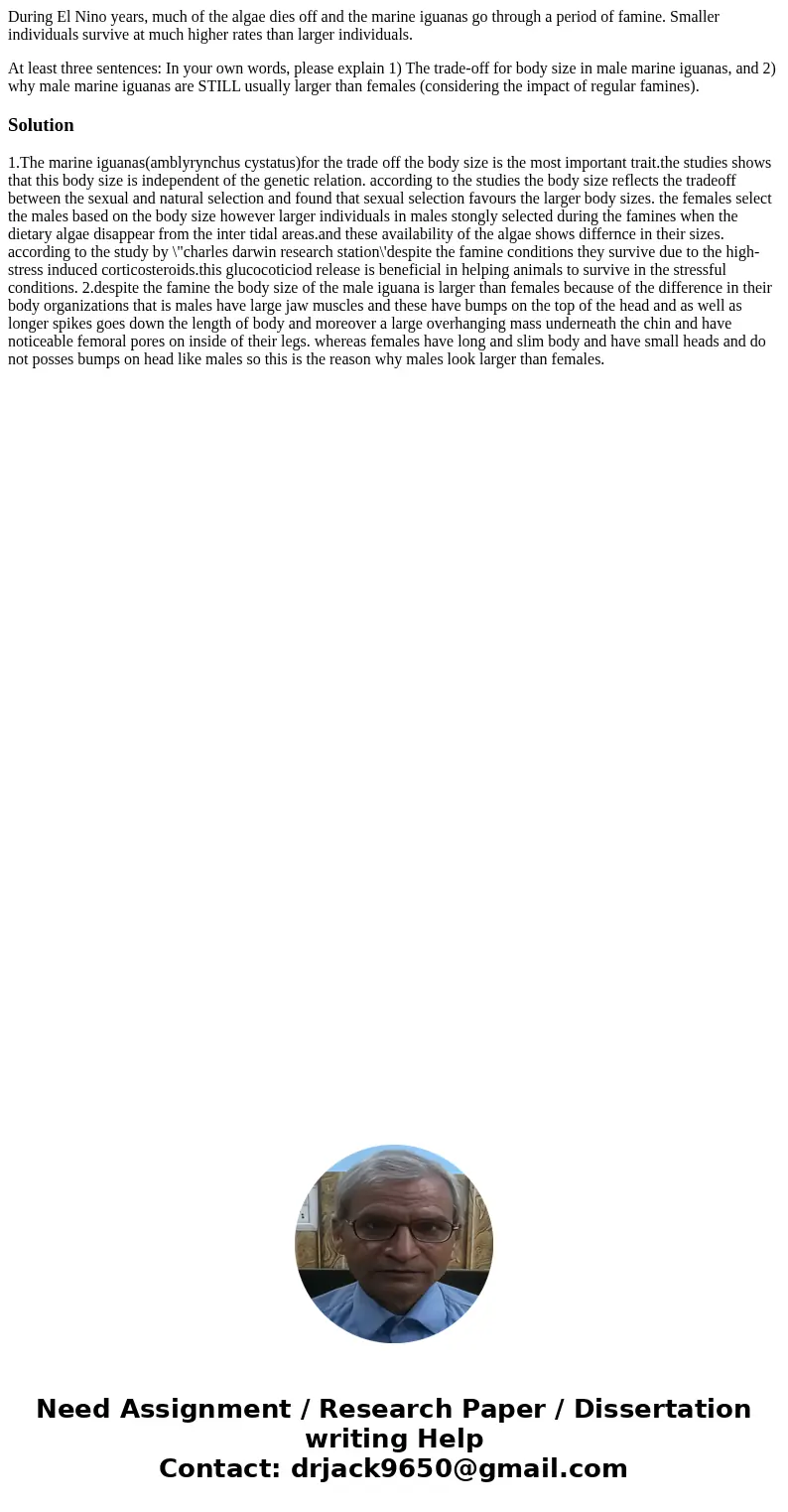During El Nino years much of the algae dies off and the mari
During El Nino years, much of the algae dies off and the marine iguanas go through a period of famine. Smaller individuals survive at much higher rates than larger individuals.
At least three sentences: In your own words, please explain 1) The trade-off for body size in male marine iguanas, and 2) why male marine iguanas are STILL usually larger than females (considering the impact of regular famines).
Solution
1.The marine iguanas(amblyrynchus cystatus)for the trade off the body size is the most important trait.the studies shows that this body size is independent of the genetic relation. according to the studies the body size reflects the tradeoff between the sexual and natural selection and found that sexual selection favours the larger body sizes. the females select the males based on the body size however larger individuals in males stongly selected during the famines when the dietary algae disappear from the inter tidal areas.and these availability of the algae shows differnce in their sizes. according to the study by \"charles darwin research station\'despite the famine conditions they survive due to the high-stress induced corticosteroids.this glucocoticiod release is beneficial in helping animals to survive in the stressful conditions. 2.despite the famine the body size of the male iguana is larger than females because of the difference in their body organizations that is males have large jaw muscles and these have bumps on the top of the head and as well as longer spikes goes down the length of body and moreover a large overhanging mass underneath the chin and have noticeable femoral pores on inside of their legs. whereas females have long and slim body and have small heads and do not posses bumps on head like males so this is the reason why males look larger than females.
 Homework Sourse
Homework Sourse